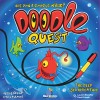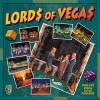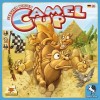Braden
gamer level 1
160 xp
160 xp
followers
2
2
Use my invite URL to register (this will give me kudos)
https://boardgaming.com/register/?invited_by=sovereignreviewer
profile badges
recent achievements

Critic - Level 1
Earn Critic XP to level up by completing Critic Quests!
Earn Critic XP to level up by completing Critic Quests!

Gamer - Level 1
Earn Gamer XP to level up!
Earn Gamer XP to level up!

My First Favorite!
Add a game to your list of Favorites by clicking the "Favorite" button on a game page.
Add a game to your list of Favorites by clicking the "Favorite" button on a game page.

I Own a Game!
Mark a game that you own by clicking the "Own It" button on a game page.
Mark a game that you own by clicking the "Own It" button on a game page.

Add Games to Your Wish List! Navigate to a game page and click on the "Want It!" button

Hmmm ... nothing yet ... maybe Braden doesn't play games that much (or maybe Braden doesn't realize that BG Gold can be earned by playing games (hint hint).

Hmmm ... nothing yet ... maybe Braden doesn't really like games that much?

Not following any games yet











Murano
Taking place in the beautiful city of Venice, you are a glassblower by trade and are trying to make it big in the local industry. Attract customers to your shops, construct glassblowing factories, ride gondolas around the islands, build beautiful palaces, pave cobblestone streets; you do it all in this game! Choose one or a combination of several strategies to gain the most power, prestige, and wealth as a Venetian glassblower.
Murano has three components which I love: 1. the clever mechanics of selecting an action each turn, 2. the “mission” cards, and 3. messing each other up! 1 – The islands are surrounded by water spaces with several gondolas. To select a desired action, you move a gondola to an open space between that gondola and the one in front of it. You can image this can create a backlog of gondolas for particularly desirable spaces. To account for this, you may pay one coin to move an “extra” gondola around the river. This is a very fun component of the game. 2 & 3 – No one knows who has which missions to accomplish, so there is not really any malicious thwarting, but don’t mind the curse and fist-slam after you take a seemingly innocuous action that completely messed up your opponent!
This game has particular appeal to me because I lived in Italy for two years and speak the language fluently. As we played Murano, I could clearly picture local and tourist shoppers strolling down the narrow cobblestone streets perusing products left and right. I could hear the yelling of the salesmen and women in dialect Italian as they tried to capture your attention and pique your interest in their products. The smells, sights, and sounds were so familiar to me. Murano gets an extra point for so thoroughly pulling me into the vibrant Italian village scene.
We’ve played this over a dozen times recently, and I could keep playing it. Replay value is very high because of the different yet interrelated paths to victory. Overall, I give Murano a very high 8.5 for its clever gameplay, its balance between planning and needing to roll with the punches, and its beautiful artwork and scenery.
Bonus tip: I find that pushing shops heavily in the very beginning sets you up with a solid income to where you may be the only player not scrambling for a revenue stream in the middle of the game. This will make more sense to you as you play.